As a tea enthusiast, I’m always on the lookout for ways to enhance the flavor and nutritional value of my favorite brew. That’s why I’ve become utterly fascinated with the idea of adding bee pollen to my tea.
This remarkable substance, collected by hardworking bees from flower blossoms, is a true powerhouse of nutrients with a wealth of potential health benefits. This article will teach how to use bee pollen in tea.
We’ll dive into the impressive nutritional profile of bee pollen, uncover its health-promoting properties, and discover delightful ways to make bee pollen tea.
Whether you’re a long-time tea lover or just starting to explore the world of bee pollen, I’m confident you’ll find this information enlightening and inspiring.
The Nutritional Powerhouse of Bee Pollen
Bee pollen is truly a remarkable substance, containing over 250 biologically active compounds that can benefit our health in numerous ways. Let’s take a closer look at the impressive nutritional profile of this natural treasure:
Protein-Rich
Bee pollen is a rich source of protein, with up to 35% of its dry weight consisting of high-quality proteins. These proteins contain a complete array of essential amino acids, making bee pollen a valuable addition to any diet.
Vitamin and Mineral Powerhouse
Bee pollen is brimming with a wide range of vitamins and minerals, including B-complex vitamins, vitamin C, vitamin K, calcium, magnesium, phosphorus, potassium, and zinc. This diverse nutrient profile supports overall health and well-being.
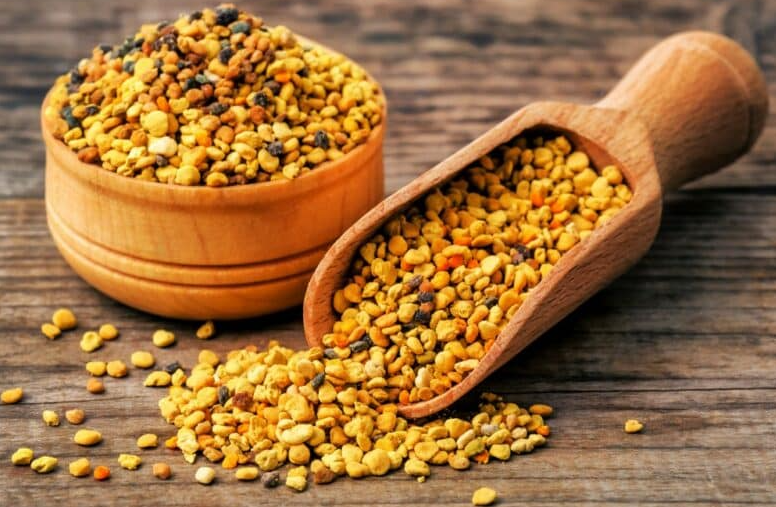
Antioxidant-Loaded
One of the most impressive aspects of bee pollen is its high antioxidant content. It’s loaded with flavonoids, carotenoids, and polyphenols, which work to neutralize harmful free radicals and protect your cells from oxidative stress.
Essential Fatty Acids
Bee pollen also contains various essential fatty acids, including omega-3s and omega-6s, which play crucial roles in maintaining optimal health, from cardiovascular function to brain health.
Enzymatic and Probiotic Benefits
Fresh bee pollen is alive and bioactive, containing beneficial enzymes and probiotic microorganisms that can aid digestion and nutrient absorption. This unique property sets it apart from processed or dried forms of bee pollen.
With such a rich and diverse nutrient profile, it’s no wonder that bee pollen has been revered for its potential health benefits throughout history. Now, let’s dive deeper into how these nutrients can positively impact our well-being.
The Science-Backed Benefits of Bee Pollen
Bee pollen’s remarkable nutritional composition suggests a wealth of potential health benefits. Let’s explore some of the science-backed advantages of incorporating this golden superfood into your daily routine:
Immune System Support
The antioxidants, vitamins, and minerals found in bee pollen work together to strengthen the immune system and enhance the body’s natural defenses. Studies have shown that bee pollen can help reduce inflammation, fight infections, and even inhibit tumor growth.
Cardiovascular Health Promotion
Bee pollen’s antioxidant and anti-inflammatory properties may help protect the cardiovascular system. Research indicates that it can help lower cholesterol levels, regulate blood pressure, and potentially reduce the risk of heart disease.
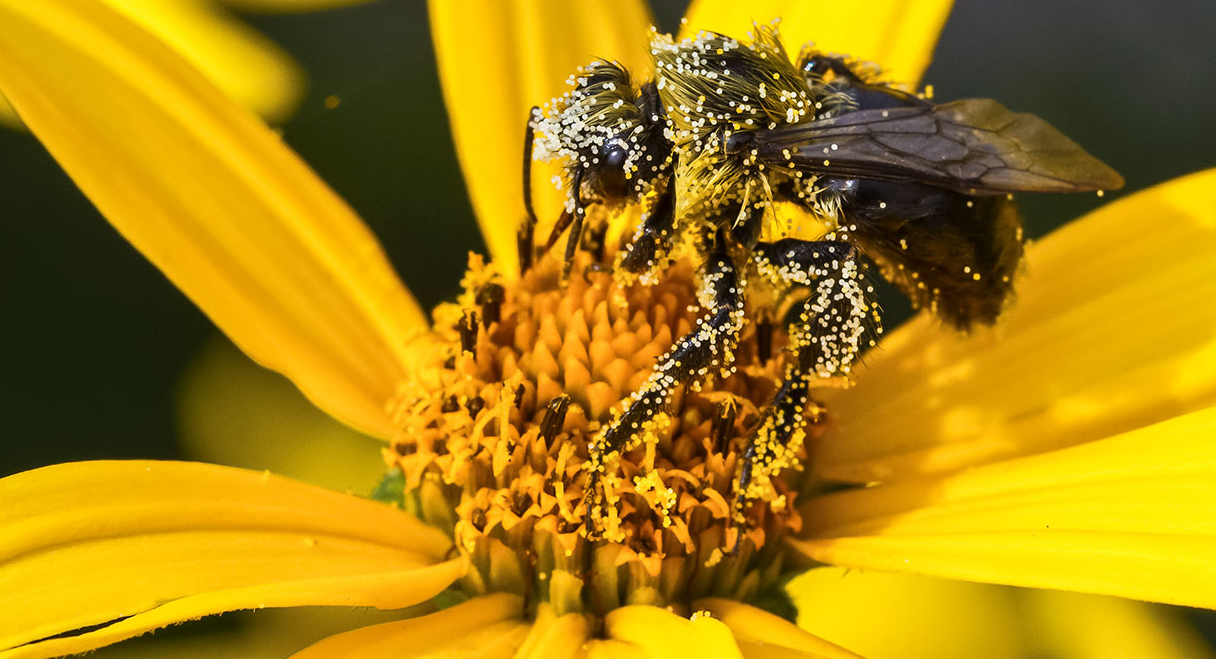
Anti-Inflammatory Effects
The potent antioxidants in bee pollen have been found to possess powerful anti-inflammatory properties. This may make bee pollen a valuable natural tool in managing conditions associated with chronic inflammation, such as arthritis, asthma, and certain autoimmune disorders.
Enhanced Athletic Performance
Bee pollen’s nutrient-rich composition, including carbohydrates, proteins, and essential fatty acids, may support physical endurance and recovery. Some studies suggest that bee pollen can improve exercise capacity and reduce post-workout muscle soreness.
Liver Protection
Bee pollen has demonstrated the ability to shield the liver from the damaging effects of toxins and harmful compounds. This protective effect may be attributed to the antioxidants and other bioactive compounds present in this versatile substance.
Potential Diabetes Management
Emerging research indicates that bee pollen may help regulate blood sugar levels and improve insulin sensitivity, making it a potential complementary approach for managing diabetes.
Wound Healing and Antimicrobial Properties
When applied topically, bee pollen has been shown to accelerate wound healing and exhibit antimicrobial effects, which can be beneficial for skin health and wound management.
As you can see, the potential health benefits of bee pollen are truly impressive, ranging from immune system support to cardiovascular protection and beyond.
The good news is that you can easily harness these advantages by incorporating bee pollen into your daily tea routine.

How to Make Bee Pollen Tea
Now that we’ve explored the nutritional profile and health benefits of bee pollen, let’s dive into the exciting world of bee pollen tea. Blending this remarkable substance with your favorite tea can create a delightful and health-boosting beverage.
Choosing the Right Bee Pollen
When it comes to incorporating bee pollen into your tea, you have a few options to consider:
- Fresh Bee Pollen: If possible, opt for fresh, raw bee pollen. This unprocessed form retains the maximum nutrient content, including enzymes and beneficial microorganisms that can aid digestion and nutrient absorption. Fresh bee pollen also has a distinct, subtly sweet, and earthy flavor that pairs beautifully with tea.
- Dried Bee Pollen: Dried bee pollen is more convenient and has a longer shelf life, but it may have lost some of its heat-sensitive nutrients and enzymes during the drying process. However, it still provides a rich array of vitamins, minerals, and antioxidants.
- Bee Pollen Powder: Bee pollen powder dissolves easily in hot water, creating a smooth and flavorful tea. This form is ideal for those who prefer a seamless integration of the pollen into their beverage.
- Bee Pollen Granules: Raw or toasted bee pollen granules offer a more textural experience, partially dissolving in hot water and providing a natural crunch.
Regardless of which form you choose, it’s crucial to source your bee pollen from reputable, ethical beekeepers who prioritize quality and sustainability. This ensures that you’re consuming a pure, unadulterated product.
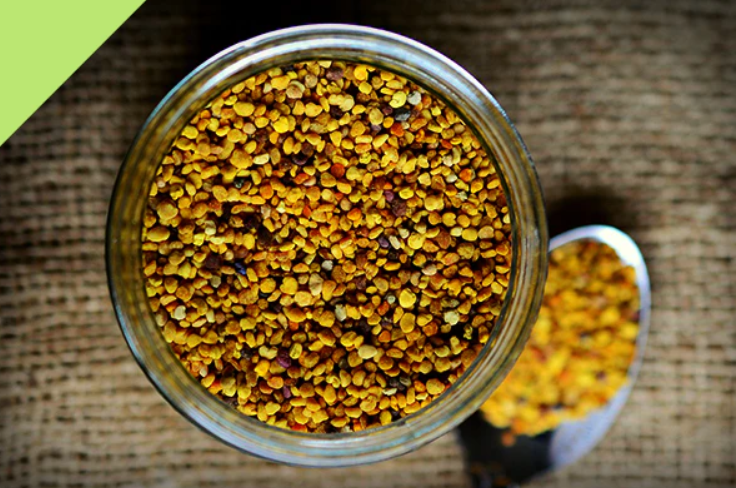
How to Use Bee Pollen in Tea?
When adding bee pollen to your tea, start with a small amount, such as 1/4 teaspoon, and gradually increase based on your personal preference and tolerance. Avoid adding bee pollen to scalding hot tea, as the high temperatures can degrade the delicate nutrients and enzymes.
Instead, try these methods for the best results:
- Steep in Warm Water: Add the bee pollen to a cup of warm water (around 110-120°F) and let it steep for 5-10 minutes before adding your tea.
- Add to Cooled Tea: Once your tea has cooled down to a comfortable drinking temperature, gently stir in the bee pollen. This prevents the heat from compromising the pollen’s nutritional profile.
- Blend into a Latte: For a creamy and indulgent twist, try adding bee pollen to a matcha latte or your favorite milk-based tea.
- Incorporate into Recipes: Beyond simply adding it to your tea, you can also sprinkle bee pollen over tea-infused baked goods, smoothies, or even savory dishes for a unique flavor and nutritional boost.
How to Make Fig Leaf Tea for Diabetics?
Pairing Bee Pollen with Different Teas
The earthy, subtly sweet flavor of bee pollen pairs beautifully with a variety of tea types. Here are some delightful combinations to explore:
- Green Tea: The grassy, vegetal notes of green tea provide a harmonious backdrop for the natural sweetness of bee pollen.
- Herbal Tea: Floral, fruity, or minty herbal infusions complement the distinct flavors of bee pollen exceptionally well.
- Black Tea: For a bolder, more robust pairing, try adding bee pollen to a robust black tea, creating a unique and satisfying beverage.
- Chai Tea: The rich, spicy notes of chai tea blend seamlessly with the warmth and complexity of bee pollen.
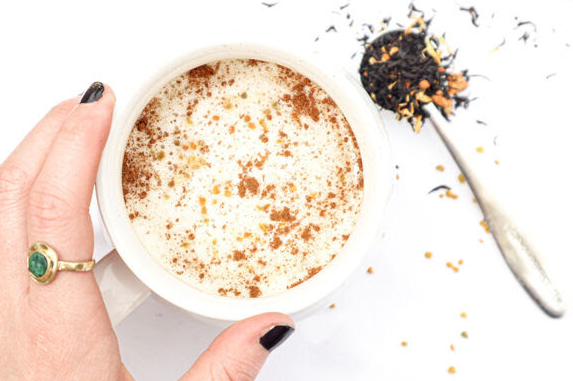
As you experiment with different tea varieties, pay attention to your taste preferences and adjust the amount of bee pollen accordingly. The key is to find the perfect balance that satisfies your palate and provides the health benefits you desire.
Bee Pollen Tea Recipes to Try
Now that you’re armed with the knowledge of how to incorporate bee pollen into your tea, let’s explore a few delightful recipes to get you started:
Simple Bee Pollen Tea
Ingredients:
- 1/4 teaspoon of bee pollen
- 1 cup of warm water (around 110-120°F)
- Honey or lemon (optional)
Instructions:
- Bring the water to a boil, then let it cool slightly.
- Add the bee pollen to a mug or cup.
- Pour the warm water over the bee pollen and stir gently.
- Let the tea steep for 5-10 minutes.
- If desired, add a touch of honey or a squeeze of lemon to taste.
Bee Pollen Matcha Latte
Ingredients:
- 1 cup of milk (dairy or plant-based)
- 1 teaspoon of matcha powder
- 1/4 teaspoon of bee pollen
- 1 tablespoon of honey (optional)
Instructions:
- Heat the milk in a saucepan or microwave until it’s just below boiling.
- Whisk the matcha powder into the hot milk until it’s fully dissolved.
- Add the bee pollen and honey (if using) and stir to combine.
- Pour the creamy bee pollen matcha latte into a mug and enjoy!
Spiced Bee Pollen Tonic
Ingredients:
- 1 cup of hot water
- 1 tablespoon of grated ginger
- 1/2 teaspoon of turmeric powder
- 1/4 teaspoon of bee pollen
- Honey or maple syrup (optional)
Instructions:
- In a mug or small pot, combine the ginger, turmeric, and hot water.
- Let the mixture steep for 5-10 minutes.
- Strain the tonic if desired.
- Add the bee pollen and a touch of honey or maple syrup (if using) and stir to combine.
- Sip and savor your spiced bee pollen tonic!
These are just a few examples to get you started. Feel free to experiment with different tea blends, spices, and sweeteners to create your own unique and delicious bee pollen tea concoctions. The possibilities are endless!
Prioritizing Safety and Sustainability
While bee pollen offers an abundance of potential health benefits, it’s important to exercise caution and consider a few safety guidelines:
Allergic Reactions
Bee pollen may trigger allergic reactions in individuals who are sensitive to pollen, honey, or other bee products. If you have any known allergies, it’s crucial to consult with your healthcare provider before incorporating bee pollen into your diet.
Medication Interactions
Bee pollen may interact with certain medications, particularly those used for allergies, asthma, or blood pressure. Always check with your doctor before adding bee pollen to your routine, especially if you’re taking any prescription or over-the-counter medications.
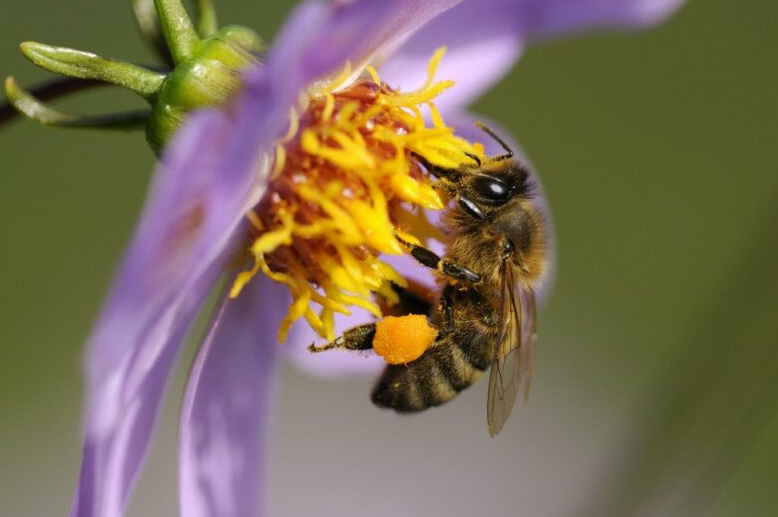
Sustainable Sourcing
When purchasing bee pollen, prioritize sourcing from reputable, ethical beekeepers who prioritize sustainable and environmentally friendly practices.
This ensures that you’re not only consuming a high-quality product but also supporting the well-being of bee populations and the broader ecosystem.
By being mindful of these safety considerations and supporting sustainable bee pollen suppliers, you can enjoy the numerous health benefits of this remarkable natural substance while contributing to the broader effort to protect our precious pollinators.
Conclusion
Incorporating bee pollen into your tea routine is a simple and delightful way to harness the abundant health benefits of this nutrient-rich substance.
From boosting your immune system to promoting cardiovascular health and beyond, bee pollen is a true superfood that deserves a place in every tea lover’s repertoire.
By experimenting with different forms of bee pollen, from fresh granules to convenient powders, and pairing it with a variety of tea types, you can create a customized beverage that satisfies your taste buds and nourishes your body.
Remember to start with small amounts, listen to your body’s responses, and consult with your healthcare provider if you have any concerns or existing conditions.